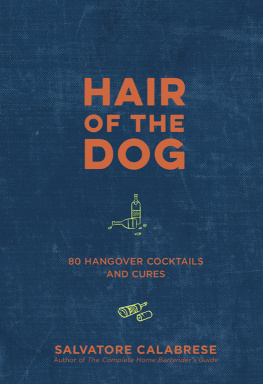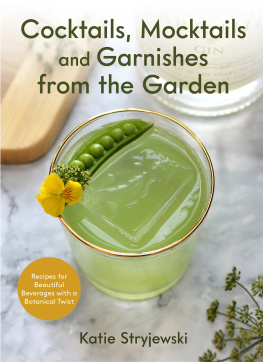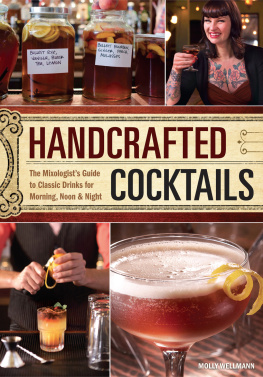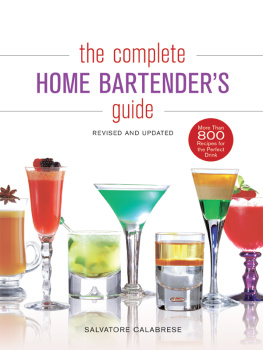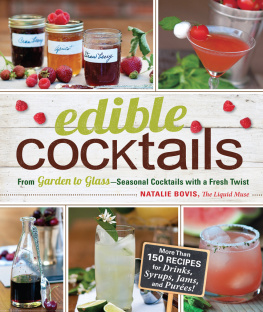
Salvatore Calabrese
COCKTAILS
BY FLAVOR
MORE THAN 390
RECIPES to TEMPT the TASTE BUDS

To my dear wife, Sue, and my family: thanks again for your support.

Design by Christine Heun
STERLING EPICURE is a trademark of Sterling Publishing Co., Inc.
The distinctive Sterling logo is a registered trademark of Sterling Publishing Co., Inc.
Revised edition 2013 by Salvatore Calabrese. Previously published by Sterling Publishing Co., Inc., and 2008 by Salvatore Calabrese
All rights reserved. No part of this publication may be reproduced, stored in a retrieval system, or transmitted, in any form or by any means, electronic, mechanical, photocopying, recording, or otherwise, without prior written permission from the publisher.
ISBN 978-1-4027-9387-5
For information about custom editions, special sales, and premium and corporate purchases, please contact Sterling Special Sales at 800-805-5489 or specialsales@sterlingpublishing.com.
2 4 6 8 10 9 7 5 3 1
www.sterlingpublishing.com


O n Italys Amalfi Coast there is one flavor above all others that hangs in the air day and night: the flavor of lemon. This is because the daredevil drive along the coast to my hometown of Maiori is where the world-famous limoncello liqueur is produced. Lemon groves line the roads, set on tiers of ledges that cascade down the mountainside. Tree branches are laden with lemons, their skins ripening from pale to dark in the warmth of a Mediterranean sun.
From childhood to adulthood, a sense of flavor filled my life. So when my publisher suggested writing a book on cocktails by flavor, I was immediately taken back to those citrus-flavored early years.
I learned about flavor from Raffaello, the bartender who taught me nearly everything I knew about the bar business back then. In our quiet moments, he would mix a cocktail, ask me to blind-taste it, then tell him the flavors that were in it. We would do this time and time again as I learned how to detect the bitter taste of Campari, a light Scotch whisky, brandy in a Sidecar, and the Brandy Alexander with its creamy finish. I grew up with the classics, which remain among my favorite cocktails to this day.
Sip by sip I savored the flavors that filled my mouth, setting off sensory connections that had lain dormant until the very second that the aged rum or fine Scotch malt whisky whacked against my taste buds. Wow! and Wow! again echoed in my mind as my taste memory worked overtime to file away these sensations.
Throughout my career, there has been a certainty: one flavor is not more popular than another. Yes, flavors come and go with trends because drinkers like to follow the fashion and like to drink whats in right now. Classicists rarely stray from the tried and true that they look forward to, such as a Martini or a Manhattan, because the taste of a cocktail is why you drink it. You do not usually choose a cocktail because of its fancy name or the incredibly cool, stylish glass in which it is served.
For decades, the number one spirit of choice has been vodka, straight and pure and, ironically, tasteless. However, this lack of flavor has made it perfect as a spirit base. You can combine anything with it. Gin has always had a unique flavor, due to the combinations of botanicals in it. But vodka is the preferable base for building upon. Take the Cosmopolitanwould cranberry and lime juices and Cointreau taste the same with rum? No.
These days, vodka distillers manufacture ranges of triple-and quadruple-distilled, and triple-filtered, vodkas to convince drinkers that vodka can have a true spirit flavor. And vodkas are also produced in a wide range of intoxicating flavors, including cherry, vanilla, rose, pepper, raspberry, peach, grapefruit, black currant, mandarin, mango, orange, horseradish, lemon, and pear.
Rum has been flavored with coconut for some decades, and now tequila producers are flavoring a few of their exquisite tequilas. Exotic liqueurs now join the familiar sweet liqueurs and cordials on the shelf to add another taste level. Juice manufacturers explore new flavors such as pomegranate and juice from the aa berry, which leads me to the other factor in this current explosion of flavors. A sense of How healthy is what Im putting into my body? reigns. People want the thrill of alcohol but they are also health-conscious.
It is a stirring time to be a bartender. The trend toward infusions offers a wealth of flavors that can be made following the age-old, do-it-yourself tradition of merging spirit and flavor. Herbs such as lavender and rosemary, spices such as chiles and saffron, and vegetables such as cucumber offer opportunities for cocktail recipes.
This book is divided into three sections. The first is called Getting It Right and contains the basics of bar equipment, glassware, preparing a cocktail, how to store spirits and wine, how to make a garnish, advice on ice, a list of terms you will come across in the recipes, and spirit measurements.
The second section is called True Spirits and examines the flavors of brandy, gin, rum, tequila, vodka, Scotch, whiskey, and sake. The third section is an A to Z of Flavors, within which recipes are presented under bitters, fruits, herbs and flowers, nut flavors, spices, sweet and creamy, unusual flavors, vegetables, and wine flavors.
Finally, experimenting with flavors is essential to the development of a successful cocktail list. For me, however, no other flavor surpasses that of a cocktail glass filled with gin straight from the freezer, a whiff of vermouth, and the teardrops of a twist of lemon. My Martini!
Salvatore Calabrese
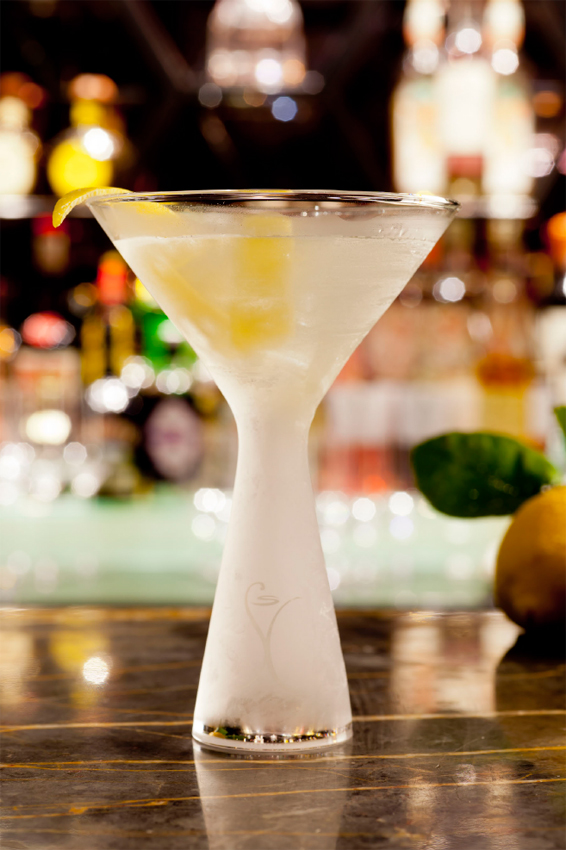
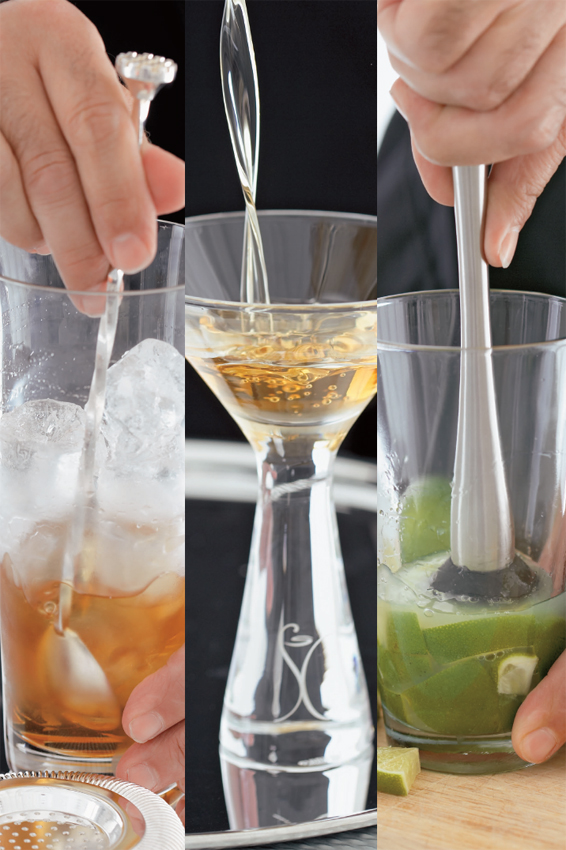
N ow theres a word to start the taste buds watering. Strictly defined, the word flavor is about the blend of taste and smell sensations evoked by a substance in the mouth. Every bartender will agree with that definition. Each cocktail he or she makes is a blend of aromatic sensations, with every sip a palate pleaser.
Heres the science... for those who like things proven. Recent research has confirmed that bitter, sweet, salty, and sharp (sour) are the only tastes that humans can detect. Taste buds, little organs located all over the tongue, interpret or pick up the sense of which flavors are in food and drink. All other flavors are experienced primarily through aroma with the exception of the fiery heat of chile pepper, which is a chemically induced sensation on the palate. Also, its been confirmed that an affinity for sweet and an aversion to bitter flavors are part of our genetic makeup.
There are many combinations of tastes, such as sweet/sour, bitter/salty, sour/salty, bitter/sweet, sweet/sour/spicy, sour/spicy, bitter/sour, etc. Adding the spicy sensation as well as aroma to this taste lineup results in the layers of flavor present in every good cocktail.
Next page


